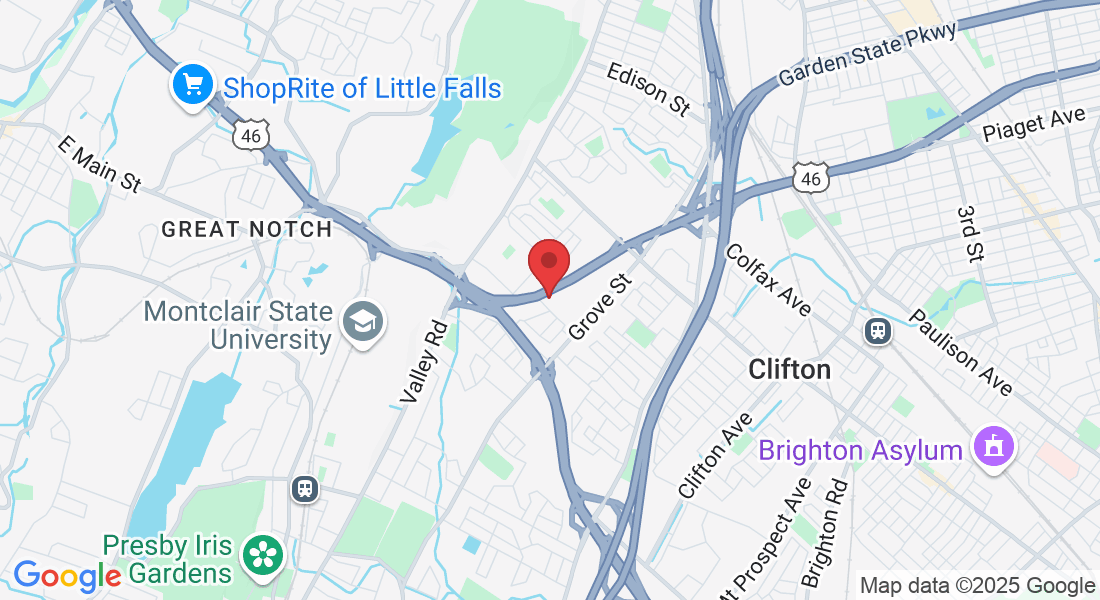New Jersey Rehab Experts
Specializing in comprehensive orthopedic care, New Jersey Rehab Experts offers a wide range of services including Physical Therapy, Sports Physical Therapy, Dry Needling, Chiropractic Care, Neuropathy Treatment, Pain Management, and Manual Therapy. Our state-of-the-art facility is staffed by board-certified therapists dedicated to delivering top-tier care, ensuring you achieve optimal recovery and wellness.
Clinic Located in Jersey City (Newport), Secaucus and Clifton
Genuine Feedback from
Our Patients
Our Affiliations

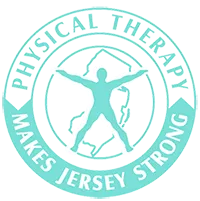




Explore Our Diverse Range of Disciplines
Discover a world of exceptional care customized for all ages! Our dedicated professionals deliver top-notch medical attention, expert rehabilitative therapy, and warm companion care for adults, seniors, and young patients. Experience personalized healthcare with a heart!
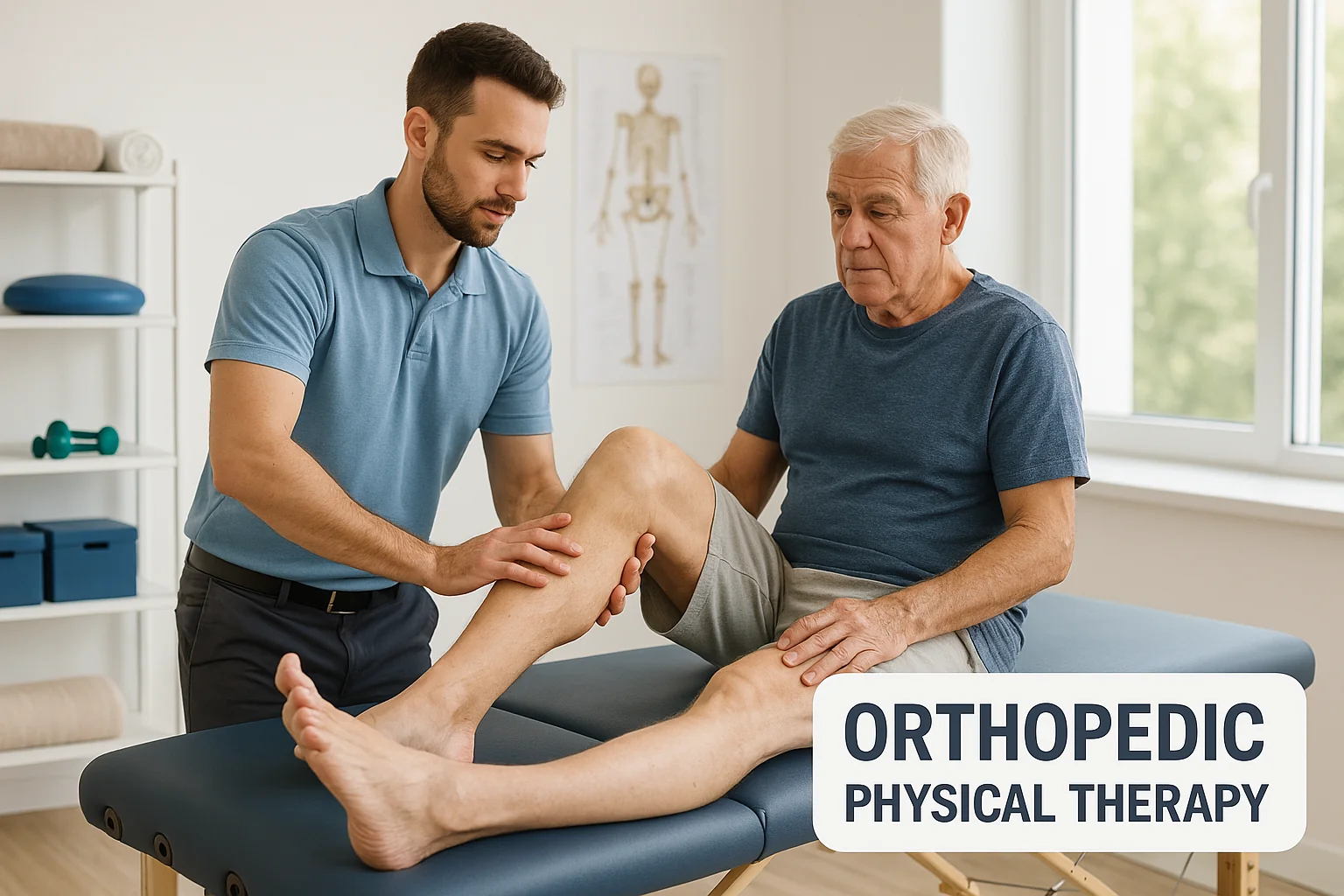
Orthopedic Physical Therapy
Specialized care for musculoskeletal injuries, surgeries, and chronic conditions affecting bones, joints, muscles, ligaments, and tendons.
- Sports injuries
- Arthritis management
- Post-surgical rehab
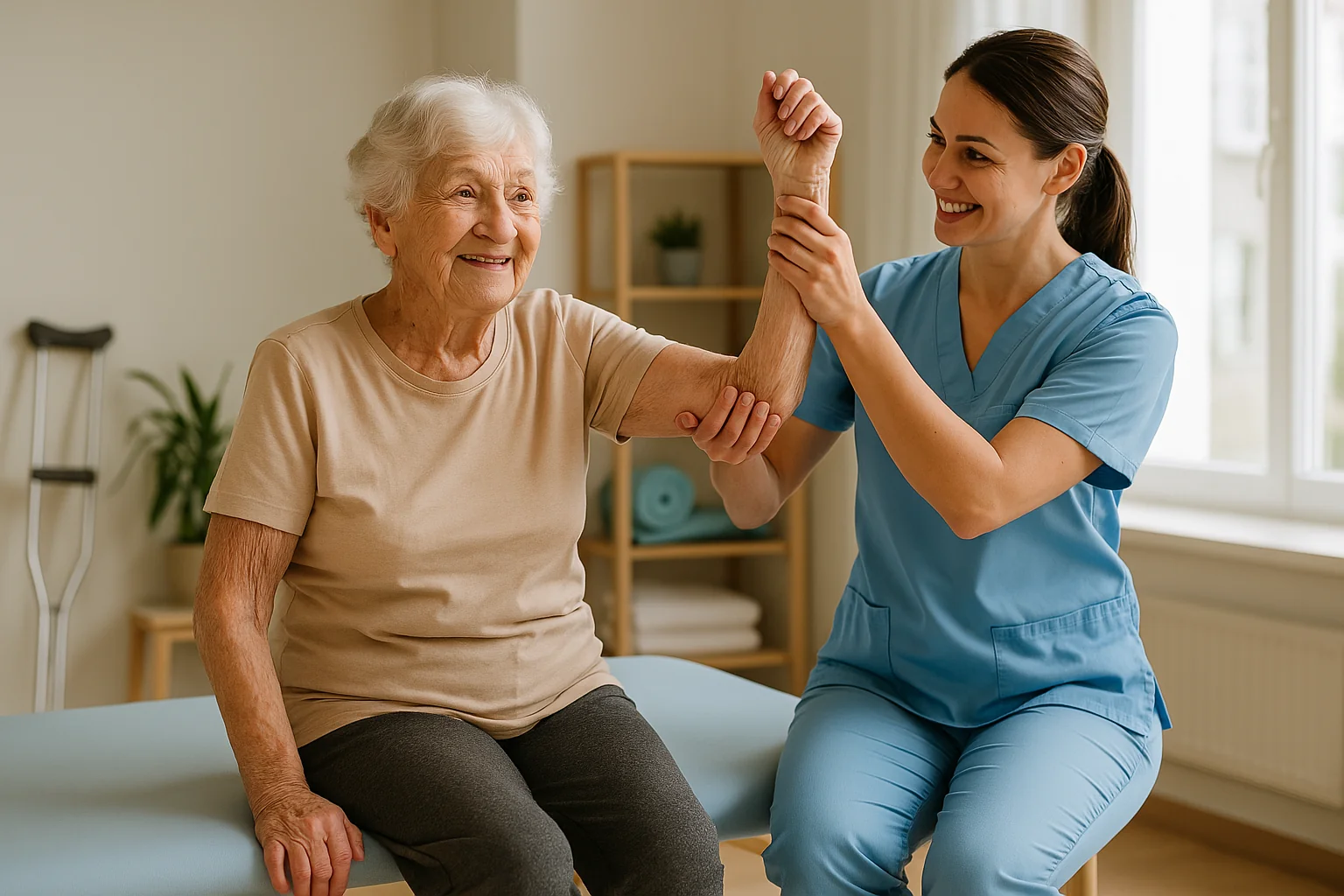
Geriatric Physical Therapy
Specialized care for older adults, addressing age-related changes affecting balance, strength, mobility, and independence.
- Fall prevention
- Balance training
- Mobility enhancement
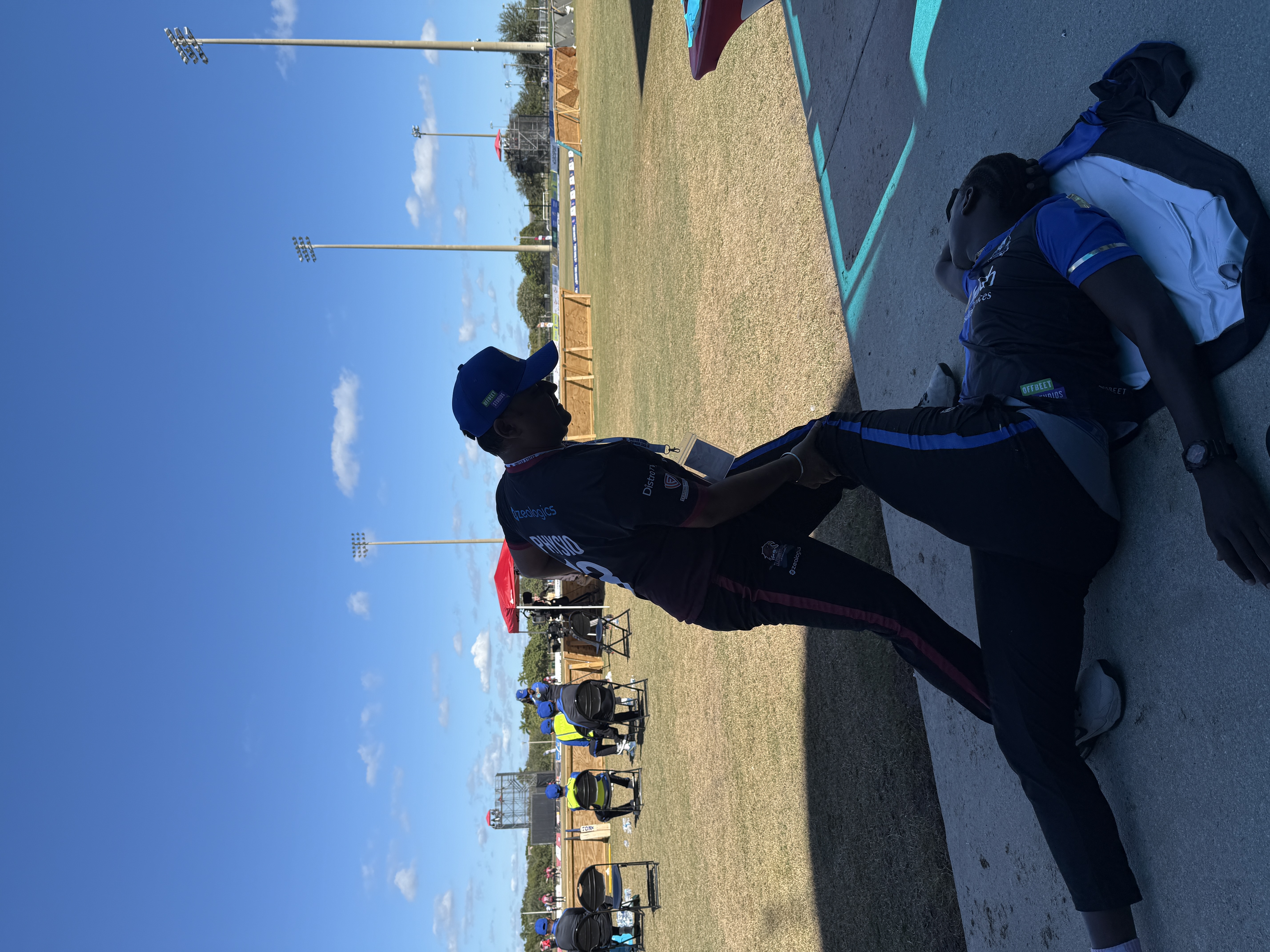
Sports Physical Therapy
Specialized rehab for athletes of all levels, from weekend warriors to professionals, focusing on injury recovery and performance enhancement.
- ACL rehab
- Return-to-play testing
- Performance optimization
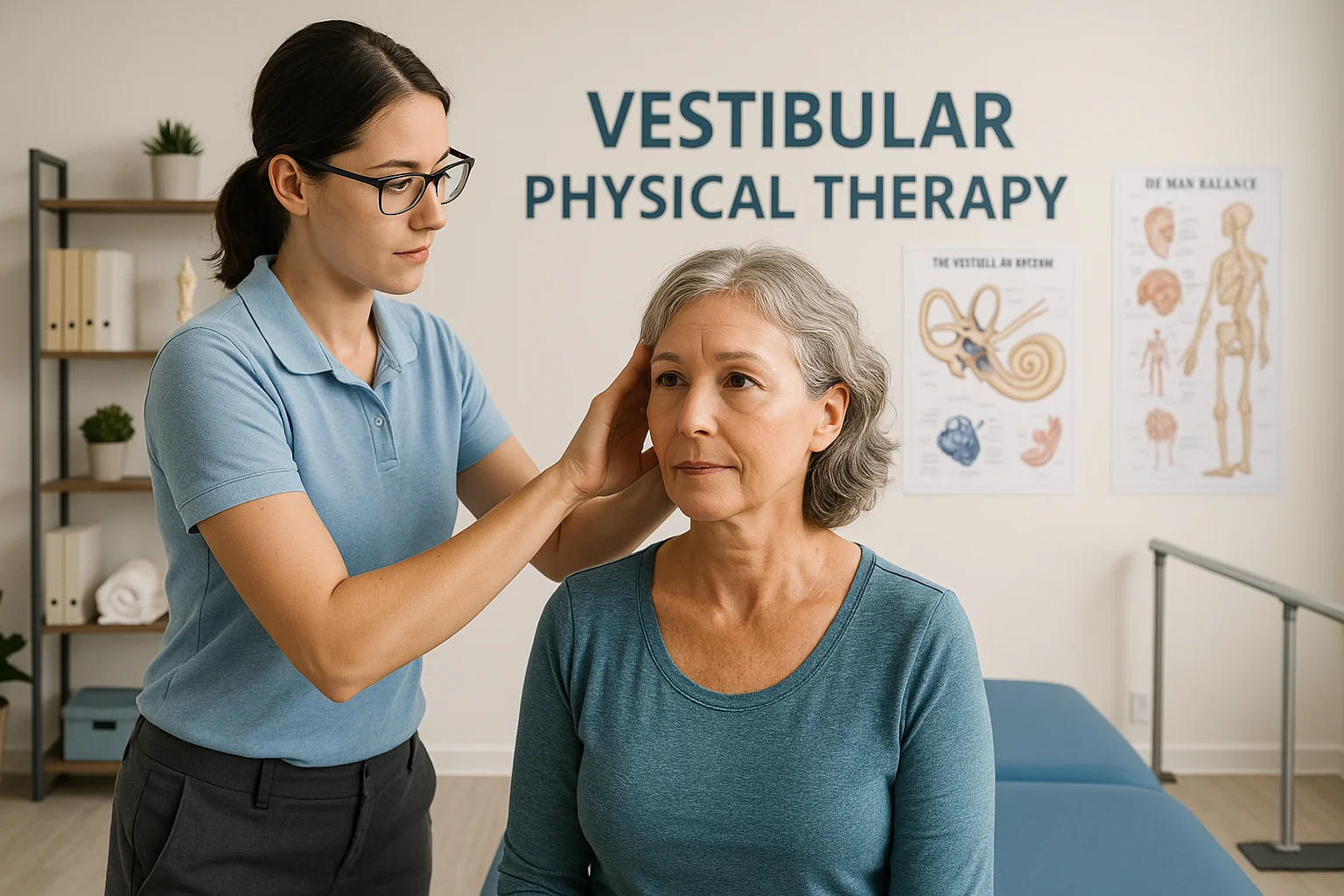
Vestibular Rehabilitation
Specialized therapy for dizziness, vertigo, and balance disorders stemming from inner ear and balance system dysfunction.
- BPPV treatment
- Balance retraining
- Dizziness management
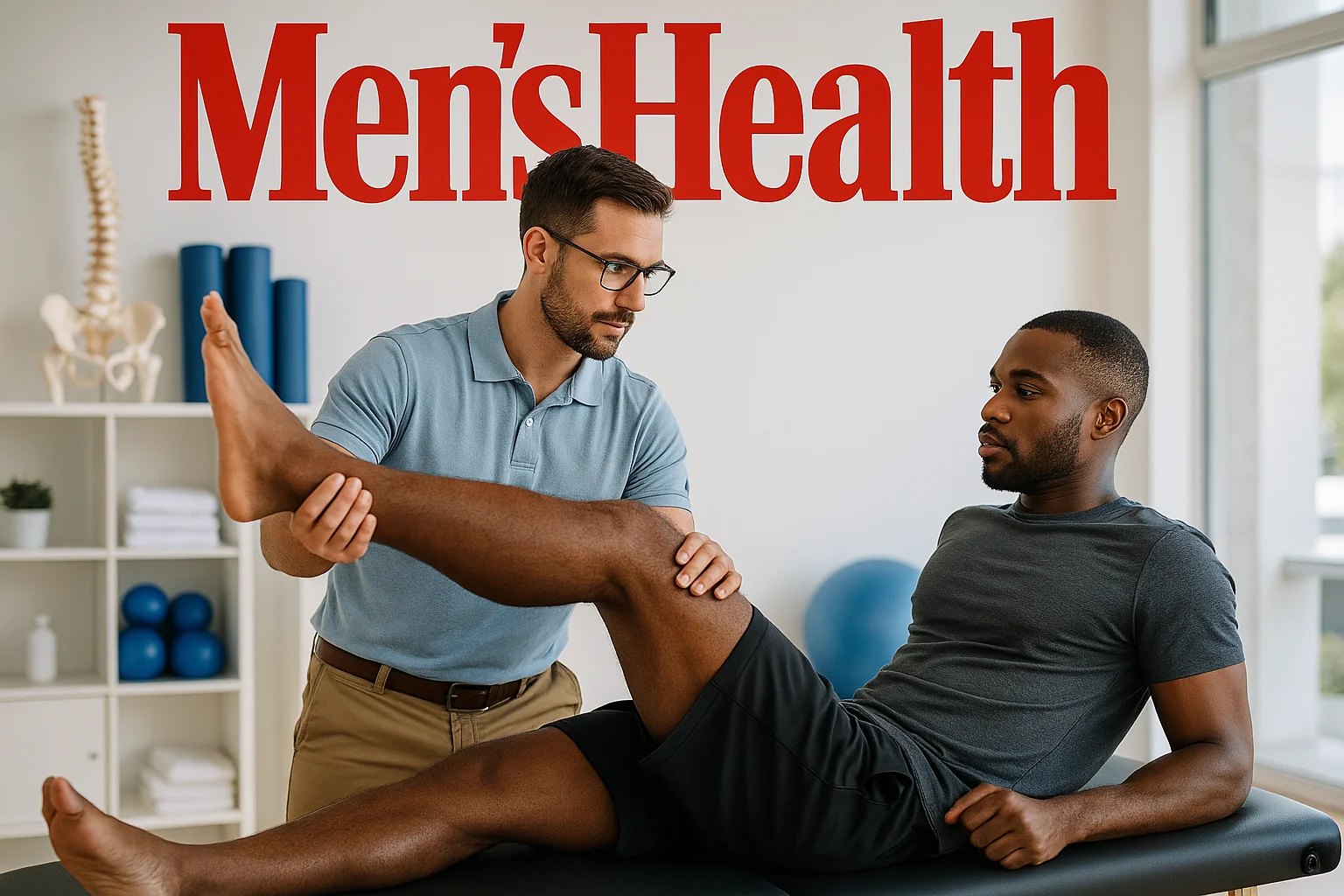
Men's Health Physical Therapy
Specialized care for pelvic floor dysfunction and related issues, providing discreet, effective treatment for men's specific health needs.
- Pelvic pain relief
- Post-prostatectomy rehab
- Urinary dysfunction

Motor Vehicle & Work Injury Rehab
Specialized care for car accidents and workplace injuries, with expert documentation and coordination with insurance providers.
- Whiplash treatment
- Workers' comp cases
- Personal injury claims
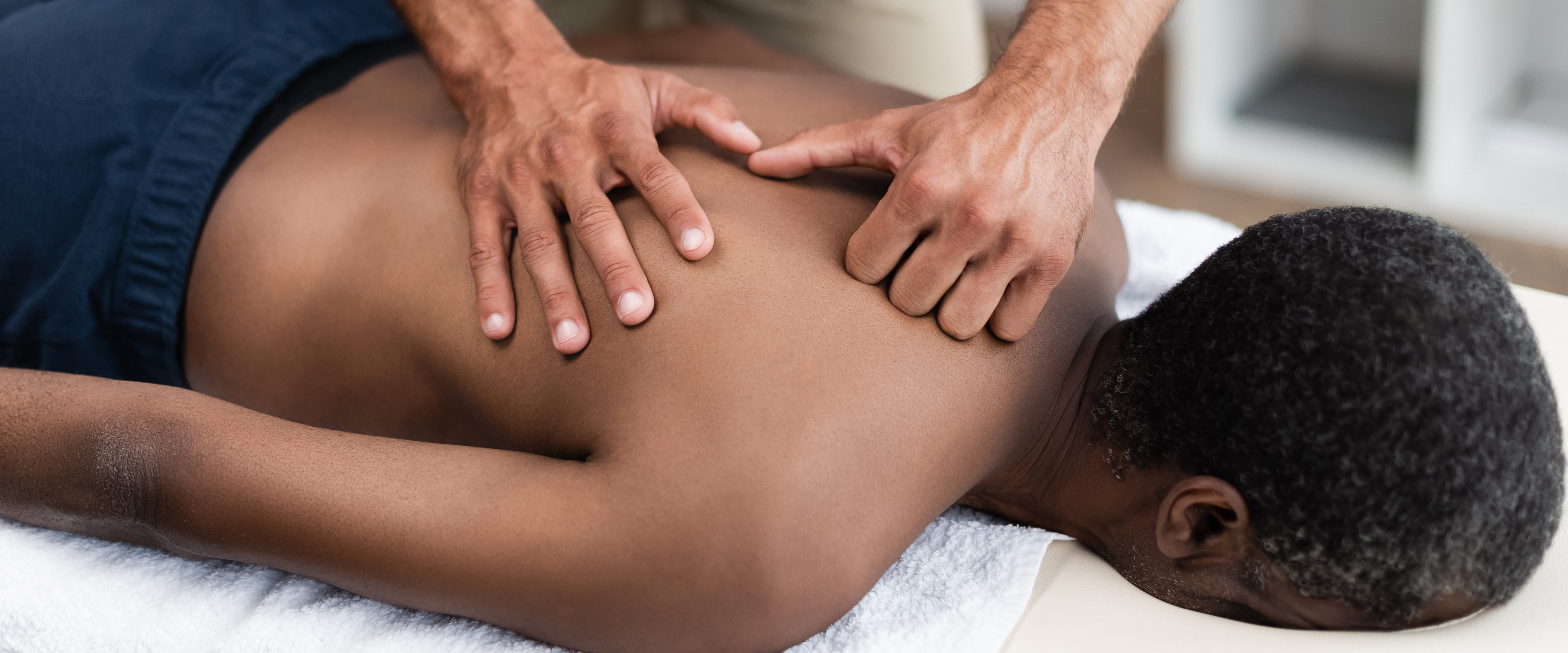
Manual Therapy
Hands-on approach using specialized techniques to relieve pain, improve mobility, and accelerate healing naturally.
- Mulligan Mobilizations
- McKenzie Method
- Myofascial Release
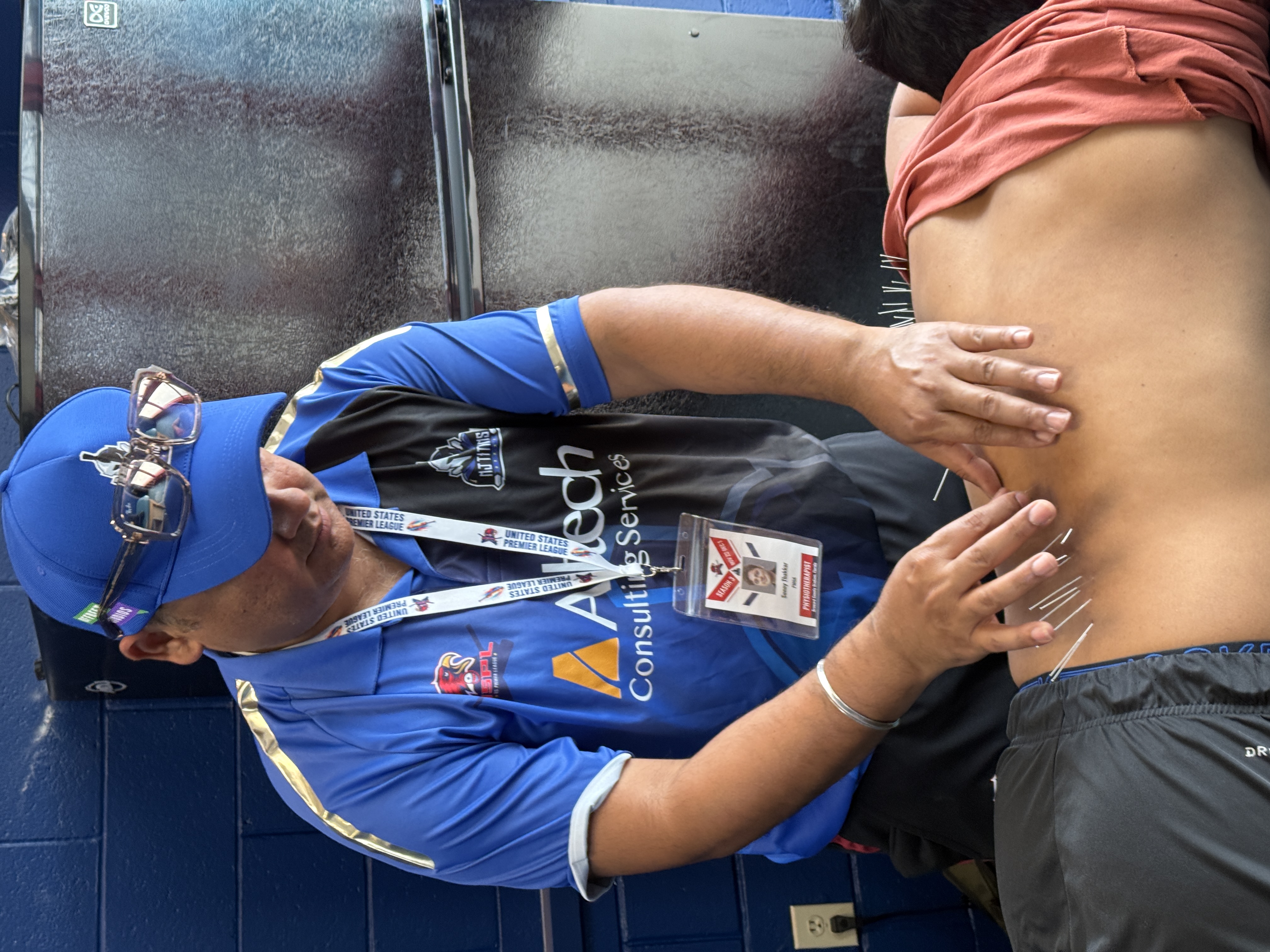
Dry Needling
Modern technique using thin, sterile needles to target trigger points, releasing muscle tension and restoring normal function.
- Back & neck pain
- Headaches & migraines
- Sports injuries
Ready to start your recovery journey?
Our expert therapists are ready to help you live pain-free and regain your mobility.
Our Advantages
Specialized Programs for Every Need
From orthopedic rehab and sports therapy to vestibular, pelvic health, and post-injury recovery, we provide comprehensive, patient-focused solutions.
State-of-the-Art Techniques & Technology
We use cutting-edge treatments like dry needling, spinal manipulation, Mulligan & McKenzie techniques, Fit3D scans, Shockwave Therapy , Cupping and more to accelerate healing.
Personalized One-on-One Care
Every patient receives individualized treatment plans with hands-on attention to ensure faster recovery and long-term results.
Trusted by Athletes & Community Leaders
Official providers for multiple cricket teams and a member of respected healthcare associations—our reputation speaks for itself.
Multiple Convenient Locations Across NJ
With clinics in Jersey City, Secaucus, Clifton , and beyond, we’re always within reach—offering flexible scheduling and bilingual support.
Seamless Support for Injury Claims & Recovery
We coordinate care with attorneys, physicians, and insurers for patients recovering from motor vehicle or work-related injuries, ensuring smooth documentation and stress-free rehab.
Meet Our Team

Sunny Thakkar PT, MS ( Exercise Physiologist)
Physical Therapist

Ashish Sinha, PT, DPT
Physical Therapist

Dr. Rohit Farzala PT, DPT
Physical Therapist
About Us
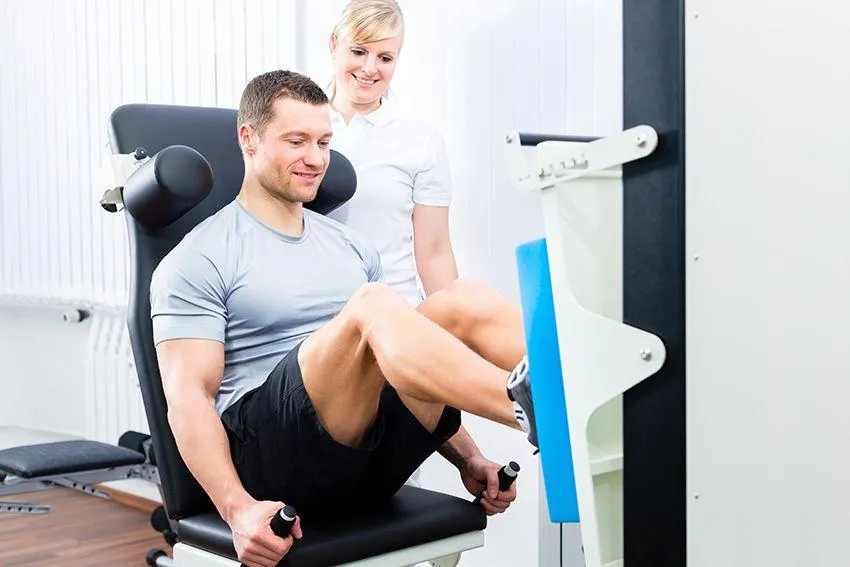
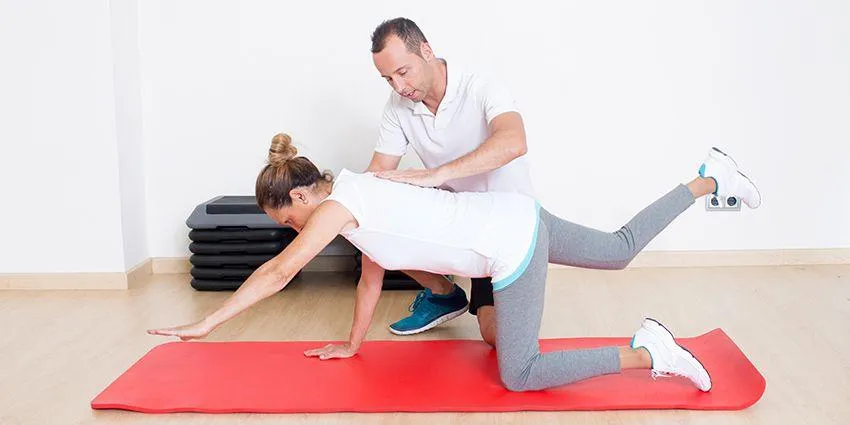
Experience rapid rejuvenation as our specialist team harnesses the power of advanced healing tech to erase pain with ease. We dive deep into your world, assessing every piece of the puzzle—stress at work, life pressures, physical health, nutrition, genes, posture, and even emotional ties—crafting a tailor-made wellness blueprint that's as unique as you are. With our dedicated holistic touch, we don't just treat symptoms; we empower you to embrace a pain-free, harmonious life.
Ask a Question

Conquer Side Cramps: Top Tips to Run Pain-Free and Boost Your Performance
Conquer Side Cramps: Top Tips to Run Pain-Free and Boost Your Performance
Running is a liberating experience, but the dreaded side cramps can easily turn your stride into a struggle. Whether you're a seasoned marathoner or a weekend jogger, those sharp, stabbing pains can halt your momentum and disrupt your performance. But fear not! With a few smart strategies, you can conquer side cramps and transform your running experience. In this article, we'll explore top tips that not only help you run pain-free but also enhance your overall performance. Say goodbye to those frustrating interruptions and hello to smoother, more enjoyable runs. Get ready to tune into your body, adjust your habits, and unlock your full potential on the track or trail. Let’s dive in and discover how you can run without the pain and push your limits further than ever before!
Understanding Side Cramps: What They Are and Why They Happen
Running offers a sense of freedom and accomplishment, but side cramps can quickly turn that joy into discomfort. Known scientifically as exercise-related transient abdominal pain (ETAP), side cramps manifest as sharp, stabbing pains typically located just below the ribs. These sudden spasms can range from mild to severe, often forcing runners to slow down or even stop to alleviate the pain. Understanding what side cramps are and why they occur is the first step in preventing them and improving your running experience.
Side cramps often happen due to the diaphragm's irritation. This crucial muscle, responsible for breathing, can become stressed during vigorous physical activity, especially if proper breathing techniques are not employed. Additionally, the repetitive motion of running can jostle the organs, leading to discomfort. Although the exact cause remains somewhat elusive, several factors, including poor posture, insufficient warm-up, and improper breathing,g are believed to contribute to the occurrence of side cramps.
Other theories suggest that side cramps may result from the reduction of blood flow to the diaphragm. When running, blood is diverted to the muscles in your legs and arms, potentially leaving the diaphragm with less oxygen and nutrients, causing it to cramp. Understanding these mechanisms provides valuable insight into how to address and prevent side cramps, paving the way for a more enjoyable and effective running routine.
Common Causes of Side Cramps During Running
Identifying the common causes of side cramps is crucial for developing strategies to prevent them. One of the primary culprits is improper breathing. Many runners tend to breathe shallowly, especially when they are fatigued, leading to inadequate oxygen supply to the diaphragm and resulting in cramps. Learning to breathe deeply and rhythmically can significantly reduce the risk of experiencing side cramps.
Another common cause is poor running posture. Slouching or hunching over while running can put undue pressure on the diaphragm, making it more susceptible to cramps. Maintaining an upright posture with a slight forward lean helps ensure that your diaphragm can function optimally without unnecessary strain. Additionally, overexertion and running beyond your current fitness level can lead to side cramps. Gradually increasing your intensity and distance allows your body to adapt and reduces the likelihood of cramps.
Eating too close to your run is another factor that can cause side cramps. Consuming a large meal right before running can lead to discomfort as your digestive system competes for blood flow with your muscles. It's advisable to eat at least two hours before running and opt for easily digestible foods. Hydration also plays a role; both dehydration and overhydration can disrupt the balance of electrolytes, contributing to muscle cramps, including those in the diaphragm.
Preventive Measures: How to Avoid Side Cramps
Preventing side cramps starts with adopting a holistic approach to your running routine. First and foremost, it's essential to focus on your breathing. Practicing deep belly breathing can help ensure that your diaphragm receives adequate oxygen. Inhale deeply through your nose, allowing your abdomen to expand, and exhale through your mouth. This technique not only aids in preventing cramps but also enhances overall respiratory efficiency.
Proper warm-up is another crucial preventive measure. Before hitting the track or trail, engage in a dynamic warm-up routine that includes light jogging, leg swings, and torso twists. These exercises help prepare your body for the physical demands of running by increasing blood flow to your muscles and loosening up the diaphragm. Additionally, avoid eating heavy meals right before running. Opt for a light snack like a banana or a handful of nuts if you need energy before your run.
Maintaining a good running posture can significantly reduce the risk of side cramps. Keep your back straight, shoulders relaxed, and gaze forward. Avoid slouching or leaning too far back, as these positions can strain the diaphragm. Gradually increase your running intensity and duration to allow your body to adapt. Pushing yourself too hard too soon can lead to overexertion and cramps. Lastly, stay hydrated but avoid overhydration. Sip water throughout the day and consider electrolyte-rich drinks to maintain balance.
Proper Running Techniques to Minimize Discomfort
Adopting proper running techniques is fundamental to minimizing discomfort and preventing side cramps. One effective technique is to maintain a consistent pace. Sudden changes in speed can disrupt your breathing pattern and increase the likelihood of cramps. Start your run at a moderate pace and gradually increase your speed as your body warms up. This approach helps your diaphragm adjust and reduces the risk of spasms.
Another key technique is to focus on your stride. Short, quick strides are less likely to jostle your organs and cause cramps compared to long, bounding strides. Aim for a mid-foot strike to ensure a smooth, efficient motion that minimizes impact on your body. Additionally, keep your arms relaxed and swing them naturally. Tension in your upper body can translate to tension in your diaphragm, leading to cramps.
Incorporate interval training into your routine to build endurance and improve your body's ability to handle varying intensities. Alternating between high-intensity bursts and moderate recovery periods helps condition your muscles, including the diaphragm, to cope with different demands. Gradual progression in your training allows your body to adapt and reduces the risk of overexertion and cramps.
The Role of Hydration and Nutrition in Preventing Cramps
Hydration and nutrition play a pivotal role in preventing side cramps and enhancing your running performance. Proper hydration ensures that your muscles, including the diaphragm, function optimally. Dehydration can lead to muscle cramps and fatigue, making it essential to drink water throughout the day. Avoid chugging large amounts of water right before your run; instead, sip water regularly to maintain hydration levels.
Electrolytes are crucial for muscle function and preventing cramps. Electrolytes like sodium, potassium, and magnesium help regulate fluid balance and muscle contractions. Consider incorporating electrolyte-rich drinks or snacks into your pre-run routine. Bananas, oranges, and nuts are excellent sources of these essential nutrients and can help keep cramps at bay.
Nutrition also plays a significant role in preventing side cramps. Eating a balanced diet that includes complex carbohydrates, lean proteins, and healthy fats provides the energy needed for your runs. Avoid heavy, greasy meals before running, as they can cause digestive discomfort and contribute to cramps. Instead, opt for light, easily digestible foods that provide sustained energy. Timing your meals is crucial; eat at least two hours before your run to allow for proper digestion.
Effective Stretching and Warm-Up Routines
Effective stretching and warm-up routines are essential for preventing side cramps and ensuring a smooth running experience. Dynamic stretches, which involve active movements, help prepare your muscles for the demands of running. Leg swings, high knees, and butt kicks are excellent dynamic stretches that increase blood flow and flexibility in your muscles, including those around your diaphragm.
Incorporate torso twists into your warm-up routine to loosen up your core muscles. Stand with your feet shoulder-width apart and gently twist your torso from side to side. This movement helps stretch the muscles around your diaphragm, reducing the risk of cramps. Side bends are also beneficial; reach one arm overhead and bend sideways to stretch the muscles along your ribs.
A light jog or brisk walk before your run helps gradually increase your heart rate and blood flow, preparing your body for more intense activity. This gentle warm-up helps reduce the likelihood of sudden shocks to your diaphragm, minimizing the risk of cramps. Remember to cool down after your run with static stretches to maintain flexibility and prevent muscle stiffness.
Breathing Techniques to Alleviate Side Cramps
Breathing techniques are crucial for alleviating side cramps and improving your running performance. Deep belly breathing, or diaphragmatic breathing, is one of the most effective methods. Inhale deeply through your nose, allowing your abdomen to expand, and exhale through your mouth. This technique ensures that your diaphragm receives adequate oxygen, reducing the risk of cramps.
Rhythmic breathing is another valuable technique. Coordinate your breaths with your strides to establish a consistent pattern. For example, inhale for three steps and exhale for two steps. This rhythm helps stabilize your breathing and reduces the strain on your diaphragm. Experiment with different patterns to find what works best for you.
If you experience a side cramp during your run, try the "pursed-lip breathing" technique. Inhale deeply through your nose and exhale slowly through pursed lips, as if you're blowing out a candle. This method helps relax your diaphragm and alleviate the cramp. Slow down your pace and focus on your breathing until the cramp subsides.
When to Seek Medical Advice for Persistent Cramps
While occasional side cramps are common and usually harmless, persistent or severe cramps may indicate an underlying issue that requires medical attention. If you experience cramps that do not improve with preventive measures or significantly impact your running routine, it's advisable to consult a healthcare professional.
Chronic side cramps may be a sign of conditions such as diaphragm spasms, gastrointestinal issues, or musculoskeletal problems. A thorough medical evaluation can help identify the root cause and determine the appropriate treatment. Your doctor may recommend physical therapy, dietary adjustments, or other interventions to address the issue.
Additionally, if your cramps are accompanied by other symptoms such as nausea, vomiting, or dizziness, seek medical advice promptly. These symptoms may indicate a more serious condition that requires immediate attention. Regular check-ups and open communication with your healthcare provider can help ensure that you're running safely and effectively.
Success Stories: Athletes Who Overcame Side Cramps
Many athletes have successfully overcome side cramps and achieved remarkable running performances. Their stories serve as inspiration and proof that with the right strategies, you can conquer cramps and enhance your running experience. One such athlete is Paula Radcliffe, a world-renowned marathoner who struggled with side cramps early in her career. Through diligent practice of breathing techniques and proper hydration, she managed to overcome the issue and set multiple world records.
Another inspiring story is that of Deena Kastor, an Olympic medalist who faced persistent side cramps during training. By incorporating dynamic stretches and focusing on her nutrition, Deena was able to minimize cramps and achieve her peak performance. Her dedication to understanding her body's needs and making necessary adjustments is a testament to the power of preventive measures.
Local athletes and weekend warriors also have stories of triumph over side cramps. Many have shared their experiences of experimenting with different techniques, from breathing exercises to dietary changes, and finding what works best for them. These success stories highlight the importance of persistence and the willingness to learn and adapt, regardless of your level of expertise.
Conclusion: Running Pain-Free and Enhancing Your Performance
Running pain-free is not only achievable but can significantly enhance your overall performance. By understanding the causes of side cramps and adopting preventive measures, you can enjoy smoother, more enjoyable runs. Focus on proper breathing techniques, maintain good posture, and incorporate effective stretching and warm-up routines into your practice.
Hydration and nutrition are key components in preventing cramps and ensuring optimal muscle function. Pay attention to your body's signals and make gradual adjustments to your running routine. If persistent cramps occur, seek medical advice to address any underlying issues. Learning from the success stories of athletes who have overcome side cramps can provide valuable insights and motivation.
Ultimately, conquering side cramps is about tuning into your body and making informed choices. With dedication and the right strategies, you can say goodbye to those frustrating interruptions and hello to a pain-free, exhilarating running experience. Push your limits, unlock your full potential, and enjoy the freedom that running offers.
No matter whether your condition was caused by a sport, work accident or otherwise,
we welcome the chance to serve you.
Opening Hours




